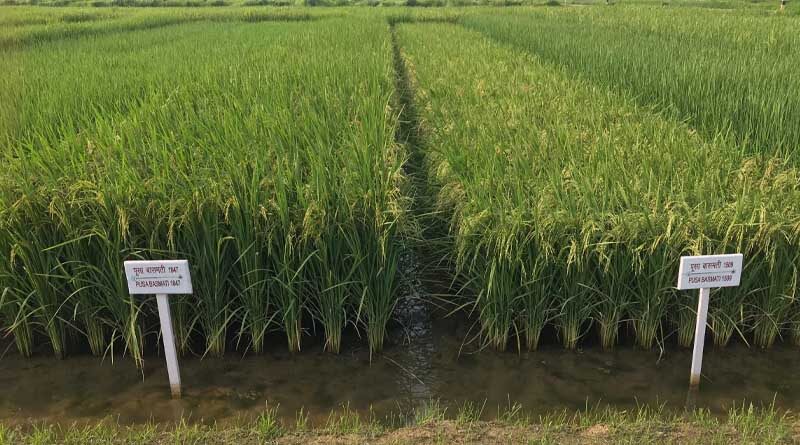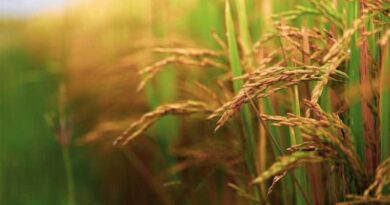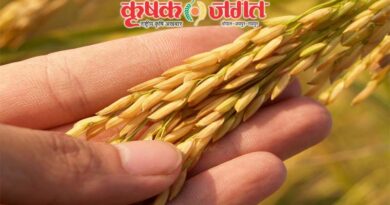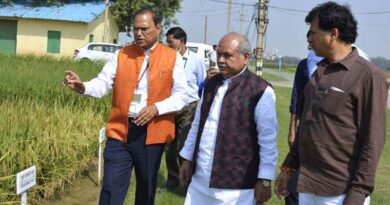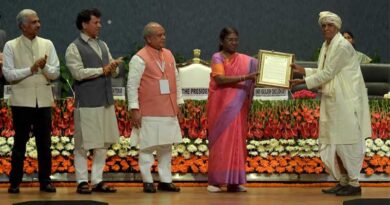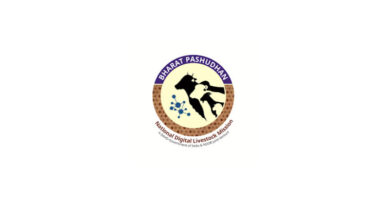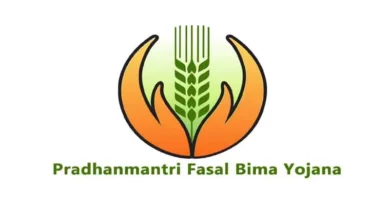Three new Pusa Basmati varieties by IARI to help India re-establish basmati exports to EU
30 September 2022, New Delhi: Indian Agricultural Research Institute (IARI) has released three new improved Basmati rice varieties viz. Pusa Basmati 1847, Pusa Basmati 1885 and Pusa Basmati 1886 with resistance to both bacterial blight and blast diseases. This will help India in maintaining its leadership in Basmati rice exports across the world.

Dr. Ashok Kumar Singh, Director, IARI said, “Basmati rice of about Rs. 30,000 crores was exported during 2021-22. Pusa Basmati rice varieties namely, Pusa Basmati 1121, Pusa Basmati 1509 and Pusa Basmati 6 occupies more than 90% of the 20 lakh hectares area under Basmati rice cultivation (GI) in India and accounts for more than 90% of the Basmati rice exports from India.”
In the recent years, India had to give up its basmati export leadership due to high residue of chemicals like streptocyclin and tricyclazole. These chemicals were extensively being used to control bacterial leaf blight and blast disease in basmati rice. The main factor in reduced exports and rejection of consignment from European Union was their reduced MRL (residue limit) of tricyclazole (one of the most commonly used fungicide in managing neck blast disease) to 0.01ppm.
In an urgent need to address this issue and to maintain the leading position in the international trade of Basmati rice, ICAR’s Indian Agricultural Research Institute, New Delhi, lead the research to incorporate resistance from these two diseases. This was done by incorporation of resistant genes to the three major varieties, Pusa Basmati 1121, Pusa Basmati 1509 and Pusa Basmati 6 through molecular marker assisted breeding. Post incorporation the new varieties were named as Pusa Basmati 1847, Pusa Basmati 1885 and Pusa Basmati 1886 in 2021.
Dr. Singh told Krishak Jagat, “The farmers in Punjab and Haryana have shown their confidence as they were able to grow the three improved varieties across Basmati growing areas with a limited quantity of seed available with the institute. The varieties were grown along with its earlier variety to check the improvements. All the three varieties have shown resistance to bacterial leaf blight and blast disease. The over all cost of cultivation has reduced by about Rs. 3,000 as the agrochemical spray is no more required. Even the cost of fertilization remains the same as earlier.”
Pusa Basmati 1847
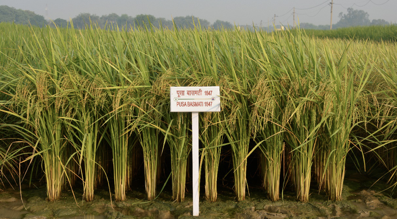
Pusa Basmati 1847 is an improved version of popular Basmati rice variety Pusa Basmati 1509 with resistance to bacterial blight and blast disease. This variety possesses two genes each for bacterial blight resistance namely, xa13 and Xa21; and blast resistance namely, Pi54 and Pi2. It is an early maturing and semi-dwarf Basmati rice variety with average yield of 5.7 t/ ha. This variety was released for commercial cultivation in 2021. Pusa Basmati 1847 is highly resistant to blast disease (susceptibility index of 2.5) as compared to Pusa Basmati 1509, which is highly susceptible (susceptibility index of 7.0). It also exhibits highly resistant reaction against bacterial blight disease (susceptibility index of 3.0) as compared to Pusa Basmati 1509, which is highly susceptible (susceptibility index of 7.0).
Pusa Basmati 1885
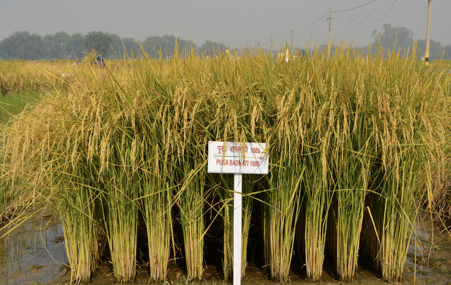
Pusa Basmati 1885 is an improved version of Pusa Basmati 1121 with inbuilt resistance to bacterial blight and blast diseases. This variety has been developed through molecular marker assisted breeding incorporation of two genes each for bacterial blight resistance namely, xa13 and Xa21; and blast resistance genes Pi2 and Pi54. It has semi-tall plant stature with extra-long slender grains and cooking quality similar to Pusa Basmati 1121. It is a medium duration Basmati rice variety with seed-to-seed maturity of 135 days with an average yield of 4.68 t/ha. Pusa Basmati 1885 is highly resistant to blast disease with a susceptibility index of 2.3 as compared to Pusa Basmati 1121, which is highly susceptible (susceptibility index of 7.3). It also exhibits highly resistant reaction against bacterial blight disease (susceptibility index of 3.3) as compared to Pusa Basmati 1121 which is highly susceptible.
Pusa Basmati 1886
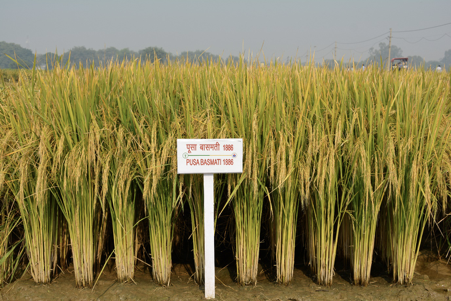
Pusa Basmati 1886 is an improved version of popular Basmati rice variety, Pusa Basmati 6, possessing two genes for bacterial blight resistance xa13 and Xa21; and two genes for blast resistance, Pi54 and Pi2, developed through molecular marker assisted breeding. It has a seed-to-seed maturity of 145 days and average yield of 4.49 t/ ha. Pusa Basmati 1886 is highly resistant to blast disease (susceptibility index of 2.5) as compared with Pusa Basmati 6, which is highly susceptible (susceptibility index of 8.5). Further, it also exhibits very high resistance against bacterial blight (susceptibility index of 3.3) as compared to highly susceptible reaction exhibited by Pusa Basmati 6 (susceptibility index of 7.3).
(For Latest Agriculture News & Updates, follow Krishak Jagat on Google News)

